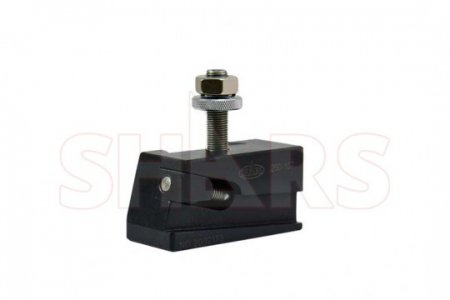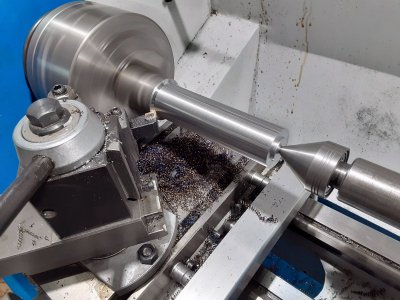- Joined
- Oct 12, 2021
- Messages
- 45
Newbie alert!
I am brand new to machining and recently purchased a 1942 South Bend Heavy 10. I converted the tool post from the original rocker/lantern style to a Shars AXA wedge type.
I really need some help selecting the parting blades for it. I foolishly thought to myself, "Just go to Amazon and order a couple." However, I didn't realize there were so many sizes and styles, and now I'm confused. Amazon has widths from 1/16" to 1/4", lengths in 3", 4". 4 1/2", 5", and 6", and styles that I have no clue about such as P1, P1N, P2, P3S, P3W, P5, P5X, and P6 and all those styles come in either HSS or Cobalt, and in Cobalt, there is 5% and 8%.
Amazon's choice (not that I put a lot of stock in that) is a 1/8" x 1/2" x 4-1/2" 5% Cobalt P3S Style.
I'm so confused... Any help would be much appreciated.
Shar's universal AXA parting blade holder:

I am brand new to machining and recently purchased a 1942 South Bend Heavy 10. I converted the tool post from the original rocker/lantern style to a Shars AXA wedge type.
I really need some help selecting the parting blades for it. I foolishly thought to myself, "Just go to Amazon and order a couple." However, I didn't realize there were so many sizes and styles, and now I'm confused. Amazon has widths from 1/16" to 1/4", lengths in 3", 4". 4 1/2", 5", and 6", and styles that I have no clue about such as P1, P1N, P2, P3S, P3W, P5, P5X, and P6 and all those styles come in either HSS or Cobalt, and in Cobalt, there is 5% and 8%.
Amazon's choice (not that I put a lot of stock in that) is a 1/8" x 1/2" x 4-1/2" 5% Cobalt P3S Style.
I'm so confused... Any help would be much appreciated.
Shar's universal AXA parting blade holder:



